Antihistamine Eye Drops Symptom Checker
This tool helps you determine if your eye symptoms are appropriate for topical antihistamine eye drops. Based on your symptoms and medical history, it will advise if you should use these drops or see a doctor.
Note: This is not a medical diagnosis. Always consult your eye doctor for proper evaluation.
Results
Enter your information and click "Check My Symptoms" to get personalized advice.
What Are Topical Antihistamine Eye Drops?
Topical antihistamine eye drops are designed to treat allergic conjunctivitis - the itchy, red, watery eyes caused by pollen, pet dander, dust, or other allergens. Unlike oral antihistamines that circulate through your whole body, these drops work right where the problem is: your eyes. They block histamine, the chemical your body releases during an allergic reaction, before it can trigger itching and swelling.
These drops aren’t new. The first one, levocabastine, got FDA approval in 1993. Since then, better versions have come out: ketotifen (Zaditor, Alaway), olopatadine (Patanol, Pataday), and azelastine (Optivar). They’re faster, last longer, and cause fewer side effects than older options. Today, you can buy some of them without a prescription, like Alaway and Zaditor, while stronger versions need a doctor’s note.
How Do They Work and How Fast?
These eye drops don’t just mask symptoms - they stop the allergic reaction at the source. When you drop them in, they bind to histamine receptors in your eye tissue, preventing the signal that makes your eyes itch and water. Most people feel relief within 3 to 15 minutes. Olopatadine 0.7% (Pataday Once Daily Relief) can reduce itching in as little as 3 minutes, and the effect lasts up to 24 hours. Ketotifen takes a bit longer to kick in but still works within 10 minutes and lasts about 8 to 12 hours.
One big advantage over oral antihistamines? No drowsiness. You won’t feel foggy or dry-mouthed like you might with pills like Claritin or Zyrtec. That’s because very little of the medicine gets into your bloodstream. It stays local, targeting only your eyes.
Common Brands and Their Differences
Not all antihistamine eye drops are the same. Here’s how the main ones stack up:
| Brand Name | Active Ingredient | Concentration | Dosing | OTC or Prescription | Duration | Common Side Effects |
|---|---|---|---|---|---|---|
| Alaway, Zaditor | Ketotifen fumarate | 0.025% | Twice daily | OTC | 8-12 hours | Stinging, mild burning |
| Patanol | Olopatadine hydrochloride | 0.1% | Twice daily | Prescription | 8-12 hours | Headache, bitter taste |
| Pataday Once Daily | Olopatadine hydrochloride | 0.7% | Once daily | Prescription | 24 hours | Headache, dry eye |
| Optivar | Azelastine hydrochloride | 0.05% | Twice daily | Prescription | 8-12 hours | Bitter taste, stinging |
Ketotifen is the most affordable option. A 2.5 mL bottle costs $15-$25 without insurance. Olopatadine 0.7% (Pataday) is pricier - $85-$120 - but you only use it once a day. Azelastine works fast but leaves a bitter taste because some of it drains into your throat through the tear duct. If you wear contacts, olopatadine 0.2% (Lastacaft) comes in a preservative-free version, which reduces irritation over time.
How to Use Them Correctly
Using eye drops wrong can make them less effective - or even dangerous. Here’s how to do it right:
- Wash your hands first. No soap? Use hand sanitizer. Dirty hands can introduce bacteria into your eye.
- Tilt your head back and pull down your lower eyelid to make a small pocket.
- Hold the bottle close to your eye - don’t touch the dropper tip to your eye or eyelashes. Contamination is a real risk.
- Squeeze one drop into the pocket. Close your eye gently for 30 seconds. Press lightly on the inner corner of your eye (near your nose) to keep the medicine from draining into your throat.
- If you’re using more than one type of eye drop, wait at least 5 minutes between them. Otherwise, the second drop will just wash out the first.
- If you wear contacts, remove them before applying drops. Wait 10-15 minutes after using the drops before putting them back in.
Refrigerating the bottle for 10-15 minutes before use can help reduce the initial stinging sensation. Many users report less discomfort this way.
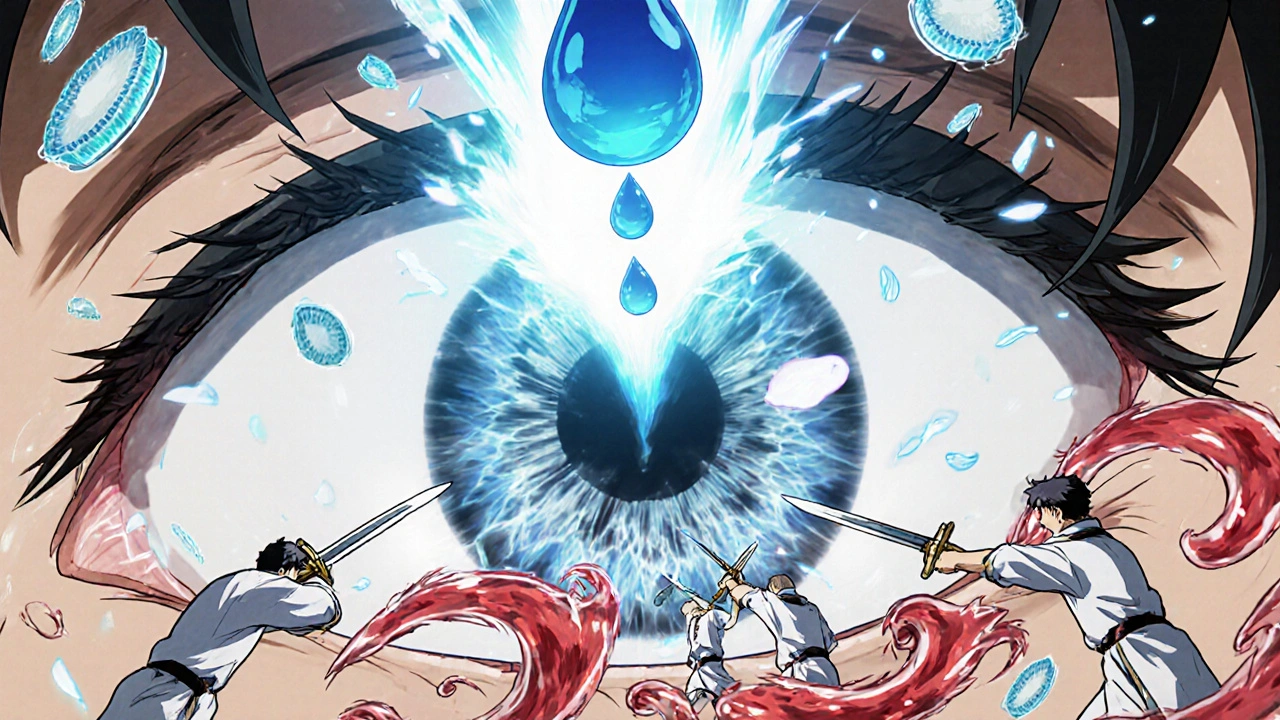
Side Effects You Should Know
Most people tolerate these drops well. But side effects happen - and some are more common than others.
- Stinging or burning - This happens in about 40% of users right after application. It lasts less than a minute. If it doesn’t go away, stop using it and check with a doctor.
- Bitter taste - Especially with azelastine. It’s not dangerous, just annoying. The medicine drains into your nose and throat.
- Redness or dryness - Can happen with long-term use. If your eyes get redder after a few days, it might not be allergies anymore.
- Preservative irritation - Most multi-dose bottles contain benzalkonium chloride, which can irritate sensitive eyes after weeks of daily use. Switching to preservative-free single-dose vials (like Lastacaft) helps.
- Increased eye pressure - Rare, but possible with use beyond 12-16 weeks. This can worsen undiagnosed glaucoma. That’s why doctors recommend an eye exam if you’ve been using drops for more than a few months.
According to FDA data, over 127 cases between 2018 and 2023 involved people who kept using OTC drops even after their eyes got worse - only to find out later they had bacterial conjunctivitis, not allergies. That’s why labels now say: Stop use and see a doctor if redness or irritation lasts more than 72 hours.
When Not to Use Them
These drops are great for allergies - but useless for other problems.
- Don’t use them for bacterial pink eye. Antibiotics are needed. Using antihistamines instead can delay treatment and lead to corneal damage.
- Don’t use them for viral infections. Viral conjunctivitis usually clears on its own in 1-2 weeks.
- Don’t use them for dry eye without allergies. Antihistamines can make dry eye worse by reducing tear production.
- Don’t use them for chemical burns or trauma. These require emergency care, not OTC drops.
There’s also a risk of paradoxical worsening. Some users report their eyes getting more red and itchy after using drops daily for over a month. The American Academy of Allergy, Asthma & Immunology has documented 47 such cases between 2021 and 2023. If your symptoms get worse instead of better, it’s time to see an eye doctor.
What About Contacts and Long-Term Use?
If you wear contacts, you’re not out of luck - but you need to be careful.
Most antihistamine drops are safe with both soft and rigid gas permeable lenses - as long as you wait 10-15 minutes after applying before putting them in. Some brands, like Lastacaft, are specifically designed to be gentler on lenses and tear film.
Long-term use is tricky. While these drops are safer than steroid eye drops (which can cause cataracts and glaucoma), they’re not meant for daily, indefinite use. The American Academy of Ophthalmology recommends a checkup after 12 weeks of continuous use. Why? Because chronic eye redness and itching could be signs of something else - like dry eye disease, meibomian gland dysfunction, or even autoimmune conditions.
Also, multi-dose bottles can get contaminated. A 2022 study in the British Journal of Ophthalmology found that 24% of eye drop bottles became infected after just one week of daily use, even when users followed instructions. Single-dose vials eliminate this risk - but cost more and create more plastic waste.

When to See a Doctor
You don’t need to see a doctor every time your eyes itch. But here’s when you should:
- Your eyes are red, painful, or sensitive to light - not just itchy.
- You have thick yellow or green discharge - that’s bacterial infection.
- Your vision is blurry or you see floaters.
- You’ve been using drops for more than 72 hours and symptoms haven’t improved.
- You’ve been using them daily for more than 3 months.
- You have a history of glaucoma or high eye pressure.
Many people delay seeing a specialist because OTC drops seem to “work.” But misdiagnosing bacterial conjunctivitis as allergies is one of the most common mistakes. The FDA has logged over 89 cases of corneal damage from this kind of delay.
What’s New and Coming
In July 2023, the FDA approved a new version of olopatadine 0.2% in a nanoemulsion formula (Lastacaft), designed to reduce preservative irritation and last longer. Clinical trials showed fewer users stopped treatment due to discomfort.
The NIH is testing a combo treatment - ketotifen with a tiny dose of dexamethasone - for severe cases like vernal keratoconjunctivitis. Results are expected in early 2024.
Market trends show growth: the global antihistamine eye drop market hit $2.14 billion in 2022 and is projected to grow over 5% annually through 2030. Climate change is making pollen seasons longer and stronger, so more people are turning to these drops.
But sustainability is a concern. Single-use vials produce over 2 tons of plastic waste every month in the U.S. alone. Some companies are exploring recyclable packaging and refillable devices - but they’re not on the market yet.
Final Thoughts
Topical antihistamine eye drops are one of the most effective, safe, and fast-acting treatments for allergic eye symptoms. They’re not perfect - they don’t cure allergies, and they’re not for every kind of eye problem. But when used correctly, they give millions of people relief without the drowsiness of pills.
The key is knowing when they’re the right tool - and when they’re not. If your eyes itch only during pollen season and respond quickly to a drop or two, you’re probably fine using OTC options like Alaway or Zaditor. But if symptoms are constant, worsening, or accompanied by pain or vision changes, skip the self-treatment. See an eye doctor. Your vision is worth it.
Can I use antihistamine eye drops every day?
You can use them daily during allergy season, but not indefinitely. Most doctors recommend limiting daily use to 3-4 months. After that, your eyes may become irritated by preservatives or develop rebound redness. If you need them longer, see an eye doctor to rule out other conditions like dry eye or chronic inflammation.
Do antihistamine eye drops cause dry eyes?
Yes, some users report dryness, especially with long-term use. This happens because antihistamines can reduce tear production slightly. If you already have dry eye syndrome, these drops might make it worse. Look for preservative-free versions like Lastacaft, and consider using artificial tears between doses.
Why do my eyes sting when I use the drops?
Stinging is common - it’s the medicine hitting your eye surface. It usually lasts less than a minute. To reduce it, refrigerate the bottle before use. If the stinging lasts longer than a few minutes or gets worse, stop using the drops and talk to your doctor. It could be a sign of sensitivity or contamination.
Can I use these drops with contact lenses?
Yes, but remove your contacts before applying the drops. Wait 10-15 minutes after using them before putting your lenses back in. This prevents the drops from getting trapped under the lens, which can cause irritation. Some formulations, like Lastacaft, are designed to be gentler on lenses.
Are OTC eye drops as good as prescription ones?
For mild, occasional allergies, OTC drops like Alaway or Zaditor work well. But if you have severe or year-round symptoms, prescription drops like olopatadine 0.7% (Pataday) last longer, work faster, and have fewer side effects. OTC versions are cheaper but require twice-daily dosing. Prescription ones may cost more, but you use them less often.
What should I do if my eyes get worse after using the drops?
Stop using the drops immediately. If your eyes become more red, painful, swollen, or if your vision changes, see an eye doctor right away. This could mean you have an infection, not allergies - or your body is reacting negatively to the medication. Continuing use could cause serious damage.

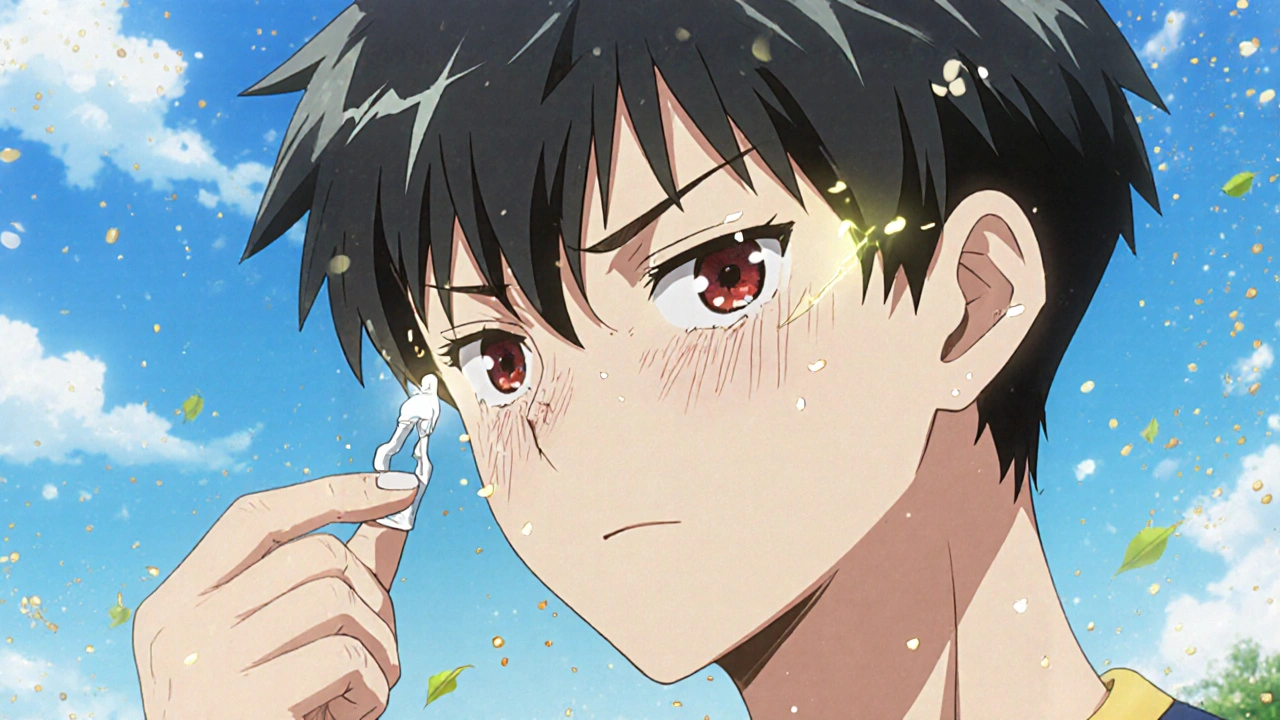



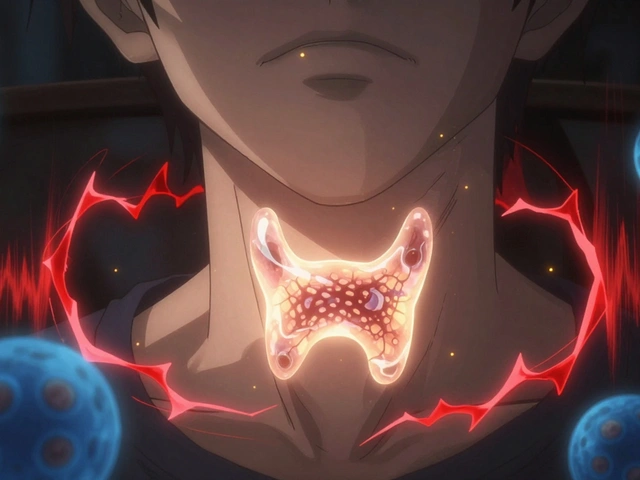

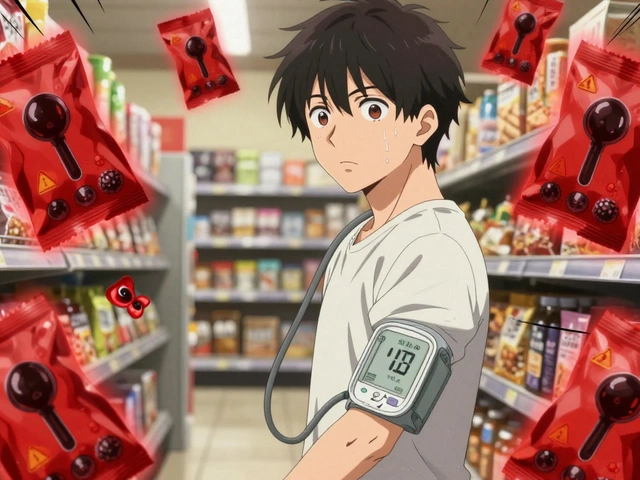
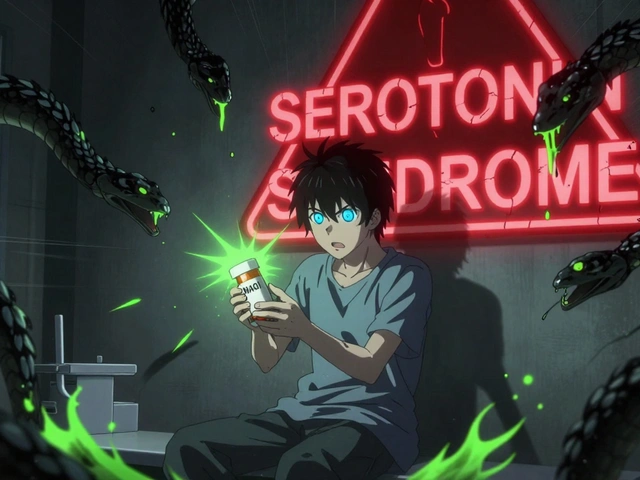
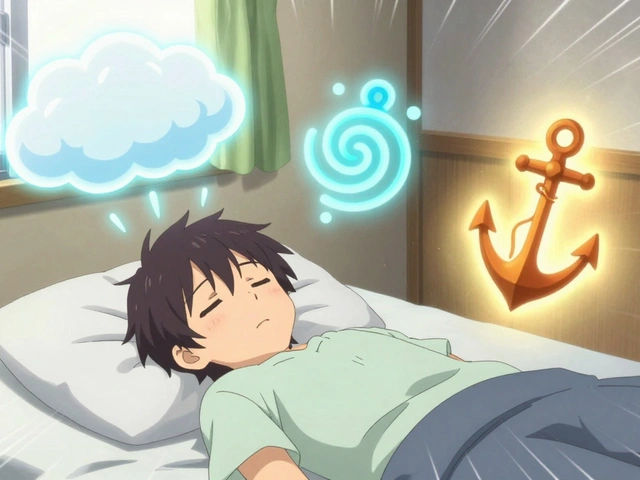
OTC drops are a scam. Big Pharma wants you hooked. They know you'll keep using them forever. 72 hours? More like 72 minutes before your eyes start burning worse. I've seen it.
I used Zaditor for 8 months straight. My eyes turned into red raisins. Then I found out I had dry eye. No one warned me. Now I cry every time I blink. 😔
I get it. You want quick relief. But if your eyes feel worse after a week, stop. Try artificial tears first. Seriously. It’s cheaper and less risky. I switched and my eyes thanked me.
I used Pataday and now my eyelashes are falling out. 🤡 I think it's a government plot to make us buy eyelash serums. #EyeDropConspiracy
I appreciate how thorough this post is. It’s rare to see such clear, practical advice without hype. Thank you for taking the time to explain the differences between brands and when to see a doctor. It really helps.
You know what they don’t tell you? The preservatives in these drops are linked to mitochondrial dysfunction. The FDA approved them because they’re paid off. I’ve been using Lastacaft for 6 months and my cortisol levels are through the roof. Coincidence? I think not.
In India, we use neem water for eye irritation. No chemicals. No stinging. Just clean, natural relief. These drops might work, but they’re not the only way. Maybe we’ve forgotten simpler solutions.
I used to think eye drops were just for allergies. Then I got a weird infection and my optometrist said I’d been misusing them for months. Don’t be like me. Read the label. Or better yet, ask someone who knows.
I’m chill with this. If it helps, use it. If it doesn’t, stop. No drama. I’ve got seasonal allergies and Alaway works fine. I don’t need to overthink it.
The pharmacokinetics of topical antihistamines are remarkably localized, with bioavailability estimates below 5% in systemic circulation. However, prolonged exposure to benzalkonium chloride induces corneal epithelial apoptosis, as demonstrated in longitudinal confocal microscopy studies. Long-term use without ophthalmologic surveillance constitutes a clinically significant risk factor for iatrogenic ocular surface disease.
You’re not alone if you’ve been using these drops longer than you should. Many of us are just trying to get through allergy season. But if you’ve hit 3 months, it’s not just about the drops-it’s about what’s underneath. Have you been tested for dry eye or meibomian gland dysfunction? That’s the real question.
I used Pataday. My eyes looked like I’d been crying for a week. Then I realized-I was crying because the bottle said 'once daily' but the label said 'twice.' I’m not dumb. But the label? Total mess. 🙄
Sometimes the simplest thing is the best. If your eyes itch once a year during pollen season, a drop or two is fine. But if it’s every day? Maybe it’s not the allergens. Maybe it’s your screen. Or your sleep. Or your stress. The drops don’t fix that.